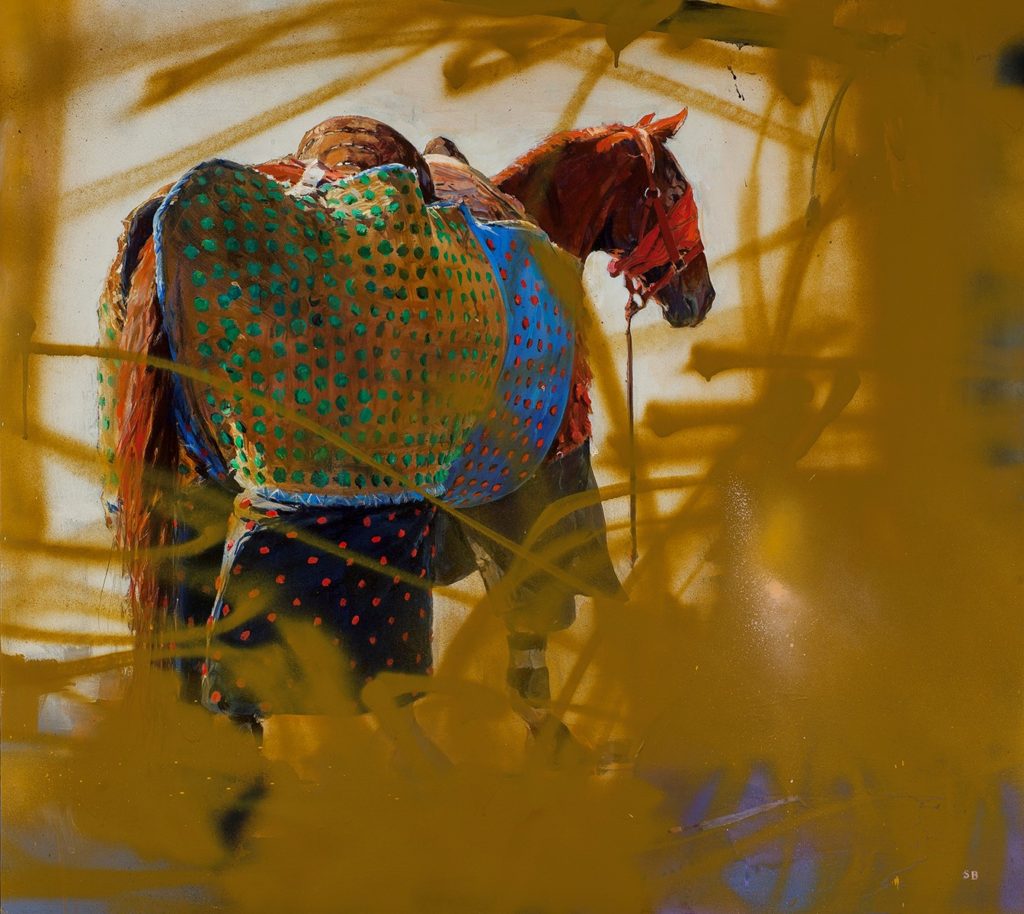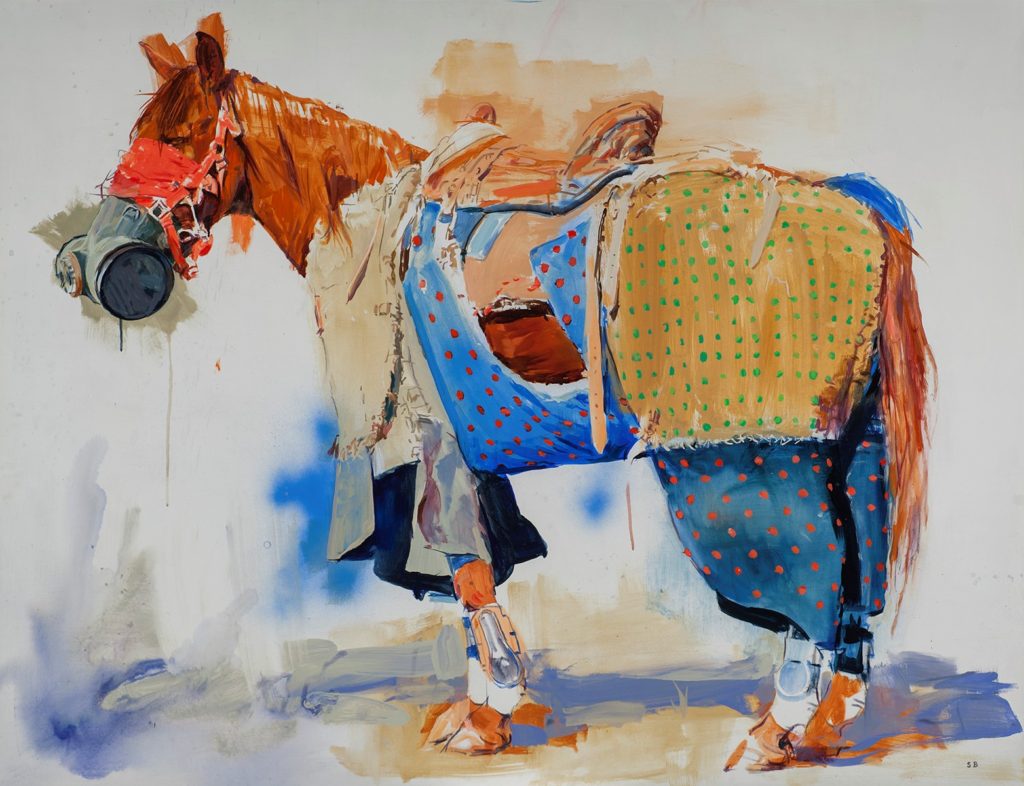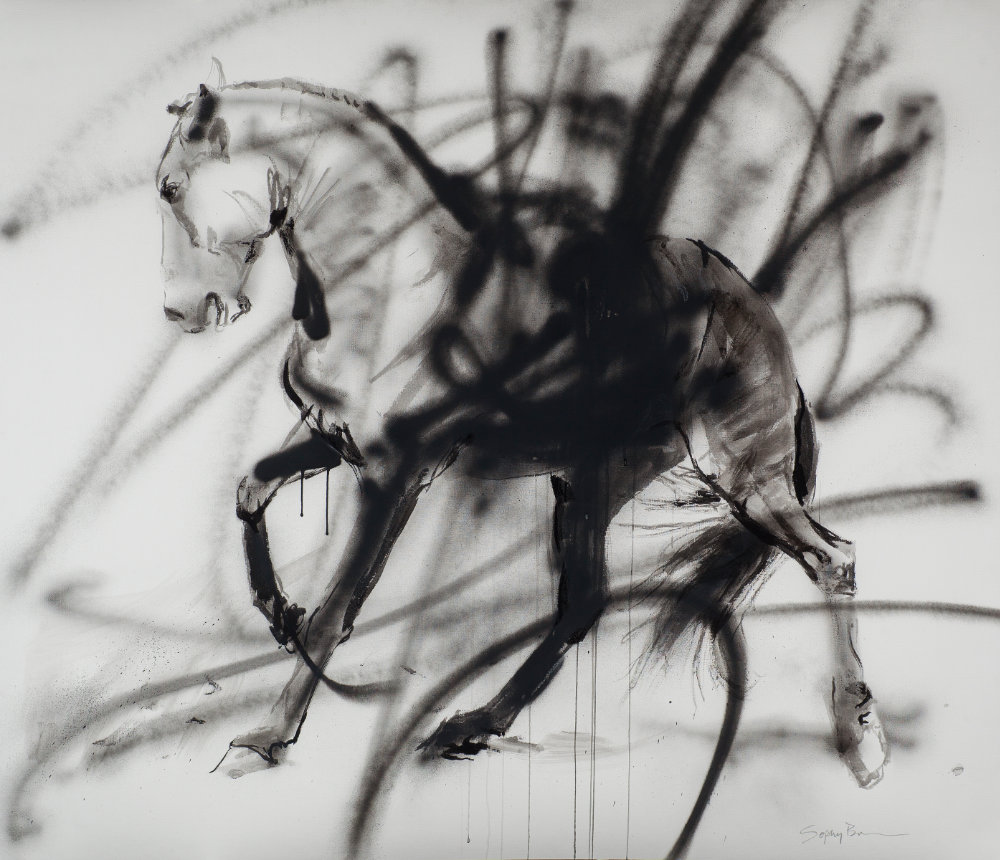
I was recently asked to write a response to a person who was upset by Sophy Brown’s depiction of horses that we are showing in this year’s Coors Western Art Exhibit & Sale. This was a bit of a head-scratcher for me; how were Sophy’s unique, thought provoking paintings of horses upsetting? Sure, you have to dig a little deeper for meaning, maybe ask some questions…perhaps get a little more of the backstory but what’s so troubling about that? Heck, I could give her context galore!
So, I tackled her grievance head on and wrote:
No horses were harmed in the creation of this work!
I went on to talk about how Sophy grew up in England, the land of great equine artists such as Munnings and Wootton and Seymore. And how she herself was a horsewoman, dedicated to the welfare of horses!
Then I hesitated. Was this person really interested in art or was she simply wanting to vent a preordained opinion?

Ah, yes. Hope springs eternal.
I decided to take a chance–at this point, I was kind of on a roll–and went on to explain that, not only were Sophy’s paintings anything but an aggrandizement of the abuse of horses, they were actually not about horses at all.
Sophy Brown’s paintings were, in fact, self-portraits.
I realized this was a lot to take in, especially for someone who most likely searches for literal meaning in art, but it is the key ingredient to accurately viewing Sophy’s work. Seeing horses in difficult predicaments is tough, I agree, but I thought if she knew these works, for the most part, are figments of the artist’s imagination and, more importantly, that they are an outward representation of her very real inward pain, grief, anger, sorrow emanating from a place of unfathomable loss, perhaps she’d register some understanding beyond her own limited vision?
Real art conveys emotions, truth, feelings
At some point in writing this response to a person I have never met, and for all I know, has no interest in art but, as I mentioned earlier, probably just wanted to vent, I realized that this was a much larger conversation and one that probably wouldn’t be well received via email.
And yet I went on, talking about how the manifestation of grief could be seen on the surfaces of Sophy’s work–thrown paint splatter and dripping down the canvases, spray paint obliterating aspects of the work, and carved mark making peeling and pulling away at the layers.

Indeed, some of Sophy’s paintings from two and three years ago, when she first went back into her studio after so much debilitating loss, were pure madness, pure emotion. Pure art.
As a curator, my job is to put together a collection of fine art. I’m sure there are many definitions of fine art but an important aspect, in my mind, is that it is a reflection of the artist’s soul. Patrons know it when they see it because it stirs emotion inside. This emotion has propelled viewers, at times, to try to destroy great works of art, I think, as a way to escape feeling so deeply. But for me, I know I’ve put together a truly important collection of work when patrons are moved by the feelings stirred inside them.
As I concluded my letter, I asked this woman to go back, now armed with context, and take another look at Sophy’s work. Here’s her response:
Dear Ms. Fredrick,
Thank you for getting back to me. I can only imagine her loss. We will have to agree to disagree on fine art vs the glorification of animal abuse. I still feel the way I do about her pieces on the site.
Have a Merry Christmas.

Agree to disagree?
Merry Christmas?!
“You,” I wrote back, “have a cold, cold heart.”
Don’t worry, I didn’t hit send because, honestly, would it have mattered?
She never would have understood that we all carry our own baggage into every experience. To accurately interpret art, the viewer has to be aware of this and then get out of the way and let the art speak. Sophy isn’t asking anyone to like her work; it is hers alone, her heart, her soul. She is not creating for an audience; she is creating to find meaning in this messed up world.
All we need to remember is what a privilege it is to bear witness.

11 thoughts on “[Mis]Understanding Art”